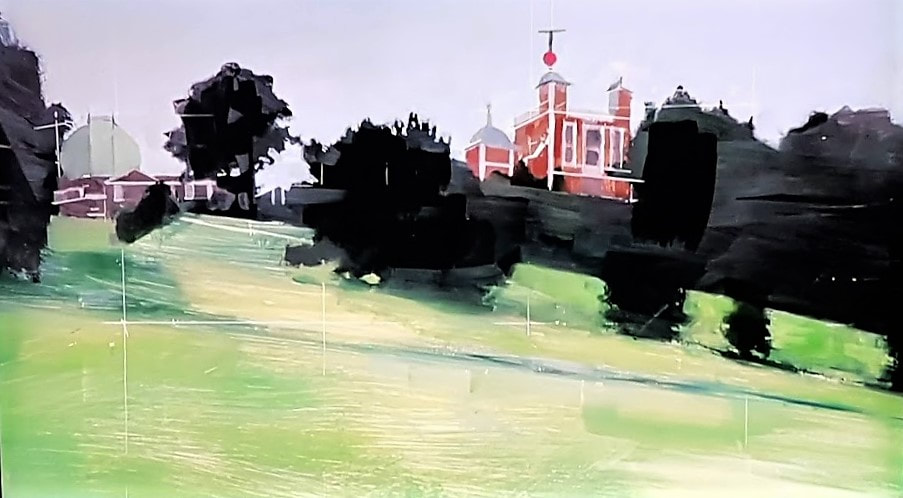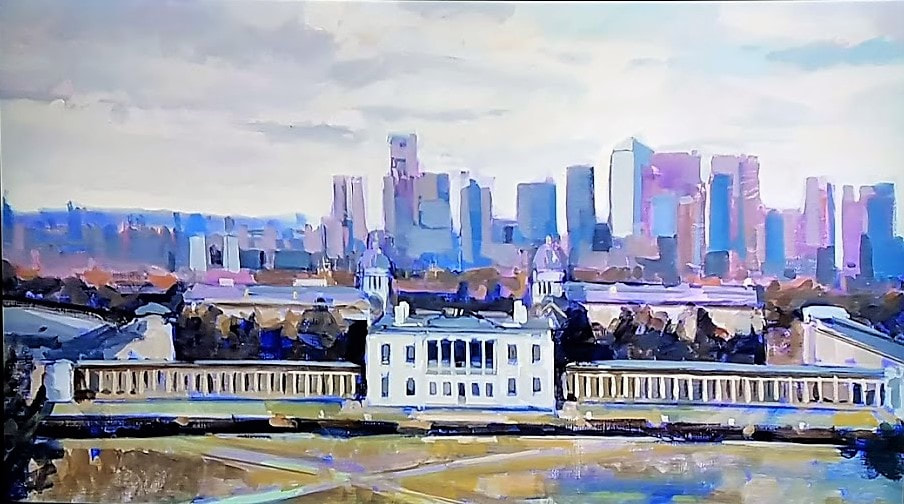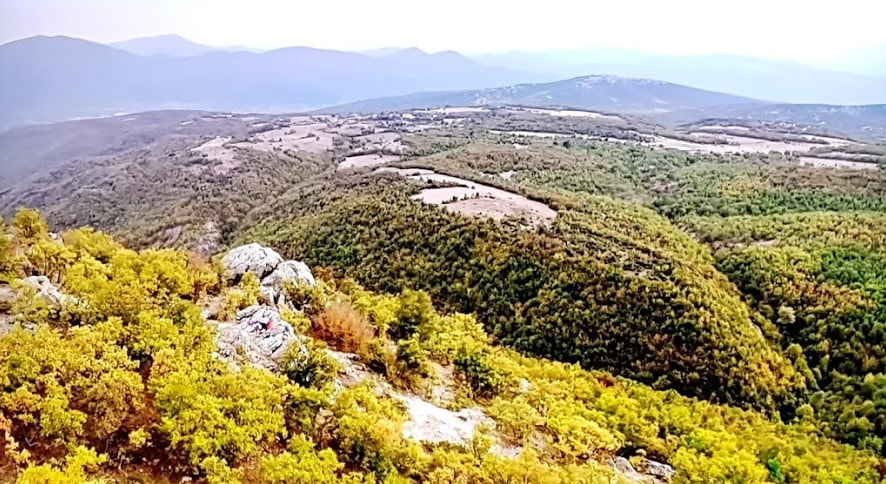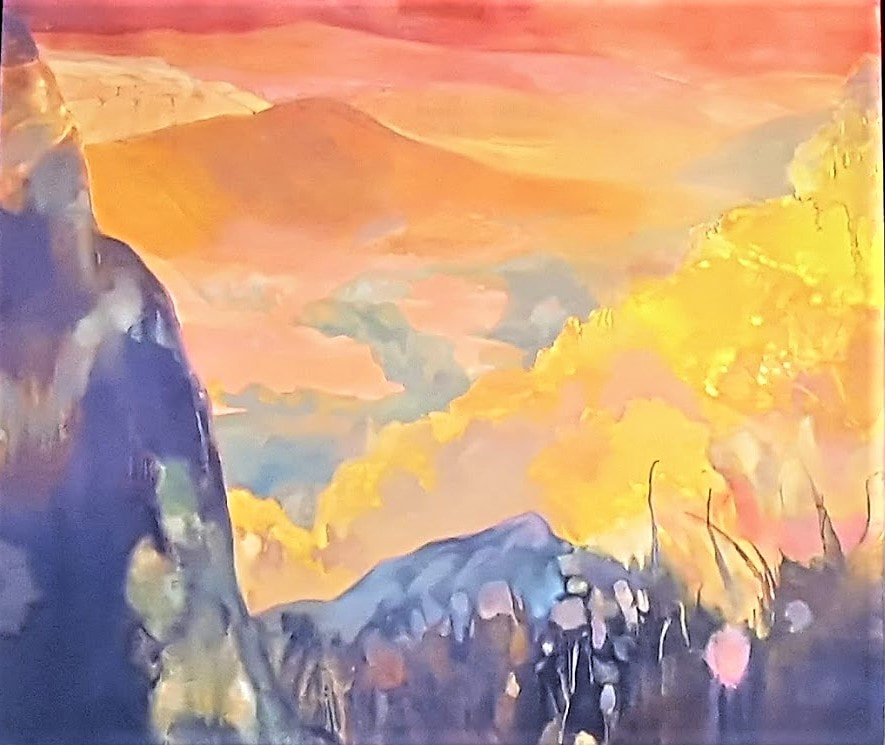|
Having watched all the previous programmes in this series I was interested to see who would be chosen this year. I had looked into sending off myself but I was going to be away on some of the dates they were filming; also I would probably have chickened out anyway! Watching the series I was surprised to see that my youngest brother, Barry, was on one of contestants on the second episode at the seaside resort of Broadstairs. Talking to him afterwards proved quite enlightening. The two previous winners had been quite traditional painters and this made me feel that landscape painting was again being recognised as a worthwhile subject to paint. Would it be the same this year?  As usual, every episode featured a range of artists and styles. As I have written in a previous blog, it seems silly to me that someone sends in a picture that took several hours or weeks to produce. On the day you only have, in theory, four hours, so if you can't produce the same quality in that time you are really not doing yourself justice. Particular instances of this were artists who collage or sew their pictures. In some cases their submissions were excellent but their final pieces were often unfinished. At times, the conditions for painting were difficult because of the weather conditions; with changes from heavy rain and wind to bright sunshine and on one instance, the scene being covered by mist for most of the day. Still all the artists produced a wide range of work. Watching each program. I always like to try and pick the finalists and the winner. I have been correct a few times but often the judges surprised me with their choices. Obviously, they have different criteria by which to judge the pieces, especially with a £10.000 commission prize on offer! It was interesting as the series progressed, to see how the artists adapted to the scene. Some of these seemed more challenging as they weren't traditional landscapes. There were a couple of seaside scenes, a dockyard and in one case a virtually completely green landscape. The semi final produced the three finalists and I thought that these three were a fair representation of style and technique. I was interested to see what they would have to paint in the final. At this stage any of the three could have won it! The final scene, overlooking Greenwich Park, was one that wouldn't have appealed to me. Everything was too symmetrical and although the distant skyline was impressive, the building at the front loomed large. The artist Allan Martin, who had produced the superb dark, moody, tonal painting for his submission, decided to face the other way and paint the observatory. His superb handling of tones seemed a little lost when colour was added and his piece completed in the studio, of the lighthouse, although an excellent painting, was, I feel, a little too romantic for the judges. The second artist Greg Mason, who I felt produced one of the best paintings of the series in the semi final at the docks, did a more traditional composition looking down at the scene. This again, I think, was not what the judges were looking for. Finally, the winner. To me she had been the dark horse of the competition. I was never really sure whether I liked her work, but she continued to produce her interpretation of the scenes in her own style. Where she was really successful, was finding an angle that others missed. The final scene was quite difficult but she captured the essence of it and whether you like the picture or not, it was true to her way of thinking and painting. However, I think what really swung it for her, was her picture of the pier at Brighton, which again, in my opinion, was one of the better pictures of the series.  What I hadn't factored into my choices, was the landscape for the commission painting. When I heard the criteria for this painting I understood more clearly why the judges chose Jen's style of painting. The winner of the competition had to go to Greece and Macedonia to create an artwork to mark the centenary of the end of the First World War. I felt that the commission didn't want a traditional painting of the landscape but one that linked the modern scene with the past. It needed to evoke a mood, which would empathise with the fact that the battle scene was a tribute to the men who had fallen and still lay covered by the soil and vegetation. It would probably not have been fitting for a pretty, representational picture. To me, this was possibly, in the back of the judges minds, and if I'm right, then Jen was the correct choice. Her work had been consistent and each scene had been a personal response painting not just a straightforward traditional view. The final programme brought back the realities of war, showing scenes from the landing and hike into the mountains, carrying all the supplies, and the final battle, where so many lives were lost. It seemed strange, to me, that when arriving at the viewpoint, the landscape now seemed so peaceful. Jen's final picture of the scene.
1 Comment
9/6/2022 09:08:32 am
The landscaping drawing images are really enjoyable and these are trusted. I found the help on your blog quite updated and we are able to join the event as well. I believe after such help here the people would able to collect the amazing paintings.
Reply
Leave a Reply. |
AuthorPhilip Westcott Categories |











 RSS Feed
RSS Feed